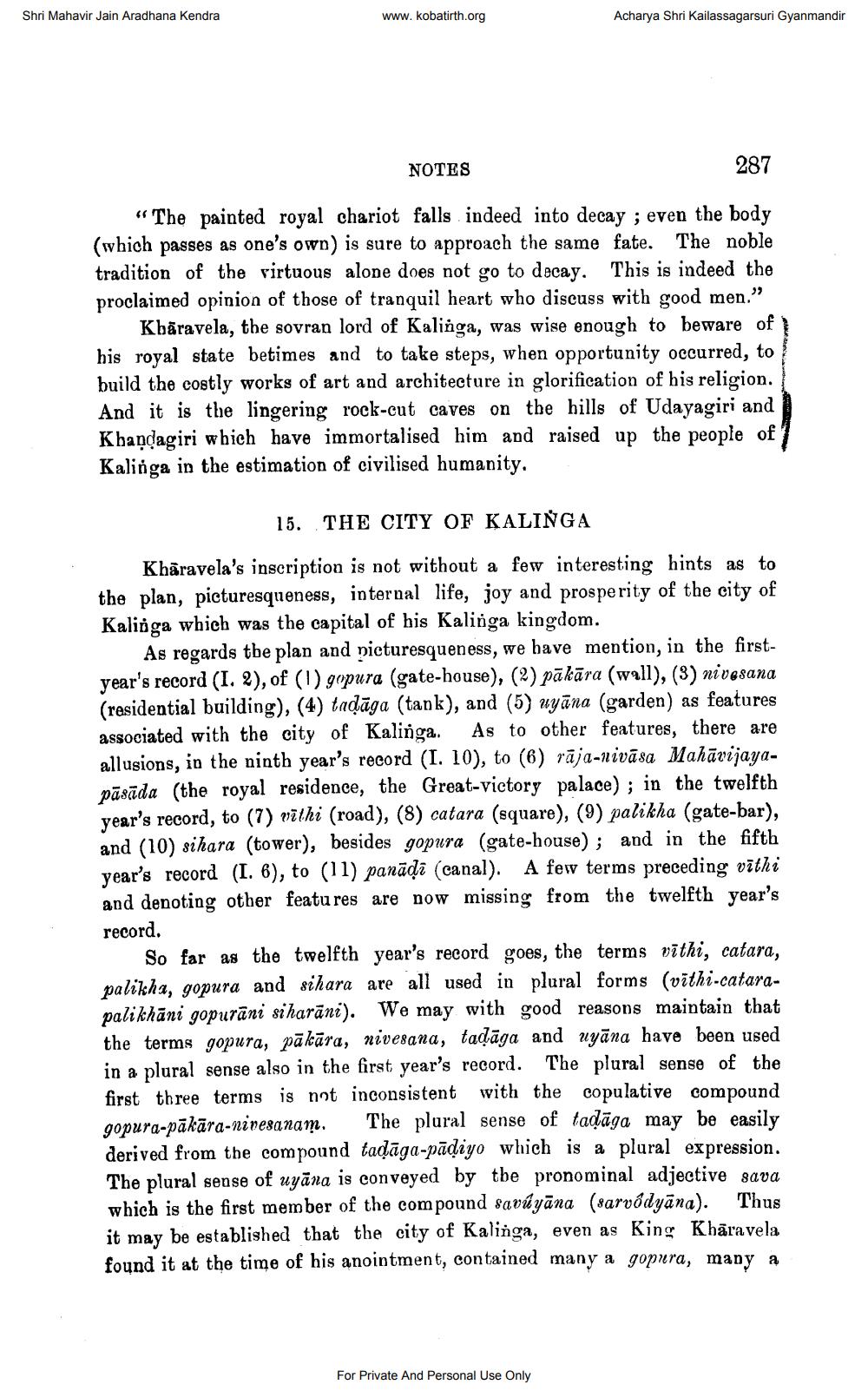________________
Shri Mahavir Jain Aradhana Kendra
www.kobatirth.org
Acharya Shri Kailassagarsuri Gyanmandir
NOTES
287
"The painted royal chariot falls indeed into decay ; even the body (which passes as one's own) is sure to approach the same fate. The noble tradition of the virtuous alone does not go to decay. This is indeed the proclaimed opinion of those of tranquil heart who discuss with good men." Kharavela, the sovran lord of Kalinga, was wise enough to beware of his royal state betimes and to take steps, when opportunity occurred, to build the costly works of art and architecture in glorification of his religion. And it is the lingering rock-cut caves on the hills of Udayagiri and Khandagiri which have immortalised him and raised up the people of Kalinga in the estimation of civilised humanity.
15. THE CITY OF KALINGA
Kharavela's inscription is not without a few interesting hints as to the plan, picturesqueness, internal life, joy and prosperity of the city of Kalinga which was the capital of his Kalinga kingdom.
As regards the plan and picturesqueness, we have mention, in the firstyear's record (I. 2), of (1) gopura (gate-house), (2) pākāra (wall), (3) nivesana (residential building), (4) taḍāga (tank), and (5) uyana (garden) as features associated with the city of Kalinga. As to other features, there are allusions, in the ninth year's record (I. 10), to (6) raja-nivāsa Mahāvijayapāsāda (the royal residence, the Great-victory palace); in the twelfth year's record, to (7) vithi (road), (8) catara (square), (9) palikha (gate-bar), and (10) sihara (tower), besides gopura (gate-house); and in the fifth year's record (I. 6), to (11) panāḍi (canal). A few terms preceding vithi and denoting other features are now missing from the twelfth year's record.
So far as the twelfth year's record goes, the terms withi, catara, palikha, gopura and sihara are all used in plural forms (vithi-catarapalikhani gopurani siharāni). We may with good reasons maintain that the terms gopura, pākāra, nivesana, tadaga and uyana have been used in a plural sense also in the first year's record. The plural sense of the first three terms is not inconsistent with the copulative compound gopura-pakara-nivesanam. The plural sense of tadaga may be easily derived from the compound taḍaga-padiyo which is a plural expression. The plural sense of uyana is conveyed by the pronominal adjective sava which is the first member of the compound savuyana (sarvódyāna). it may be established that the city of Kalinga, even as King Kharavela found it at the time of his anointment, contained many a gopura, many a
Thus
For Private And Personal Use Only




